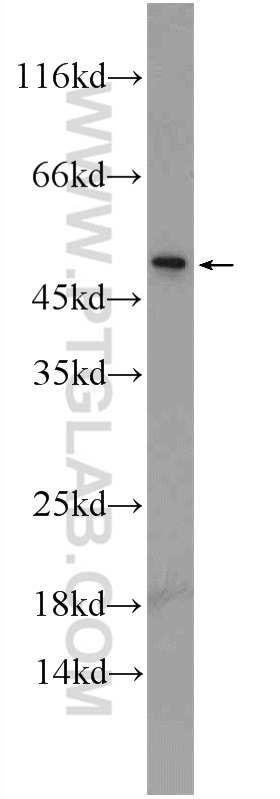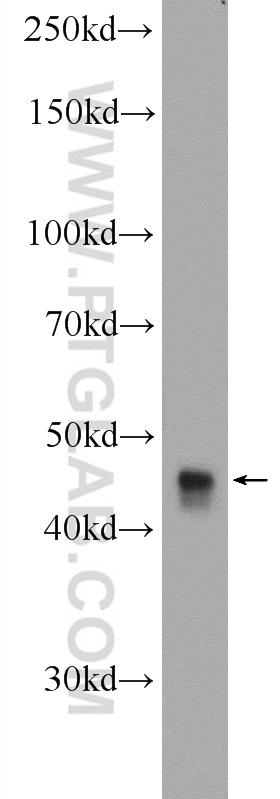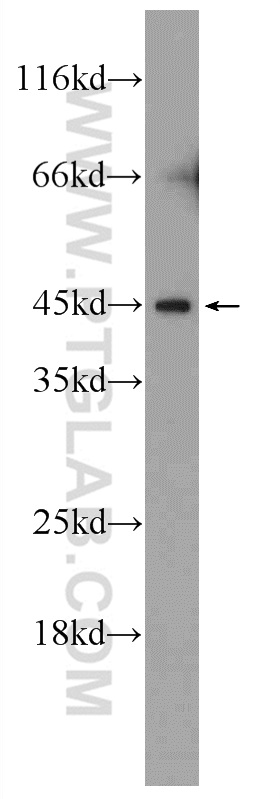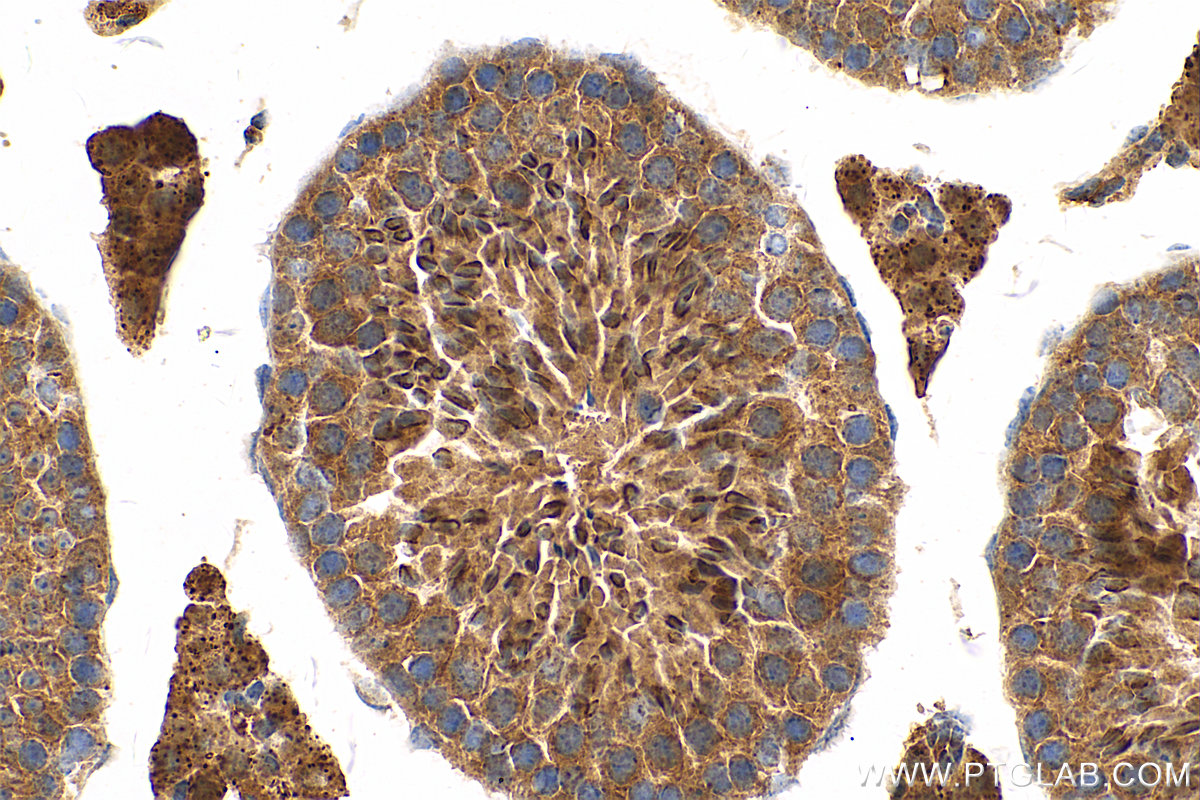验证数据展示
经过测试的应用
| Positive WB detected in | PC-3 cells, HepG2 cells, human testis tissue |
| Positive IHC detected in | mouse testis tissue Note: suggested antigen retrieval with TE buffer pH 9.0; (*) Alternatively, antigen retrieval may be performed with citrate buffer pH 6.0 |
推荐稀释比
| 应用 | 推荐稀释比 |
|---|---|
| Western Blot (WB) | WB : 1:200-1:1000 |
| Immunohistochemistry (IHC) | IHC : 1:50-1:500 |
| It is recommended that this reagent should be titrated in each testing system to obtain optimal results. | |
| Sample-dependent, Check data in validation data gallery. | |
产品信息
24722-1-AP targets C14orf138 in WB, IHC, ELISA applications and shows reactivity with human, mouse samples.
| 经测试应用 | WB, IHC, ELISA Application Description |
| 经测试反应性 | human, mouse |
| 免疫原 |
CatNo: Ag20154 Product name: Recombinant human C14orf138 protein Source: e coli.-derived, PGEX-4T Tag: GST Domain: 1-144 aa of BC105118 Sequence: MADTLESSLEDPLRSFVRVLEKRDGTVLRLQQYSSGGVGCVVWDAAIVLSKYLETPEFSGDGAHALSRRSVLELGSGTGAVGLMAATLGADVVVTDLEELQDLLKMNINMNKHLVTGSVQAKGGRNRRLSFSTRLHTDGRLHIL 种属同源性预测 |
| 宿主/亚型 | Rabbit / IgG |
| 抗体类别 | Polyclonal |
| 产品类型 | Antibody |
| 全称 | chromosome 14 open reading frame 138 |
| 别名 | C14orf138 |
| 计算分子量 | 229 aa, 26 kDa |
| 观测分子量 | 45-50 kDa |
| GenBank蛋白编号 | BC105118 |
| 基因名称 | C14orf138 |
| Gene ID (NCBI) | 79609 |
| RRID | AB_2879689 |
| 偶联类型 | Unconjugated |
| 形式 | Liquid |
| 纯化方式 | Antigen affinity purification |
| UNIPROT ID | Q9H867 |
| 储存缓冲液 | PBS with 0.02% sodium azide and 50% glycerol, pH 7.3. |
| 储存条件 | Store at -20°C. Stable for one year after shipment. Aliquoting is unnecessary for -20oC storage. |
背景介绍
C14orf138, also named as VCPKMT or METTL21D, is 229 amino acid protein, which belongs to the methyltransferase superfamily. C14orf138 localizes in the cytoplasm and interacts with ALKBH6. C14orf138 as a Protein-lysine N-methyltransferase that specifically trimethylates 'Lys-315' of VCP/p97; this modification may decrease VCP ATPase activity. C14orf138 exists as five isoforms. The calculated molecular weight of C14orf138 is 26 kDa,but we always detected a 46-50 kDa portein by western blot.
实验方案
| Product Specific Protocols | |
|---|---|
| IHC protocol for C14orf138 antibody 24722-1-AP | Download protocol |
| WB protocol for C14orf138 antibody 24722-1-AP | Download protocol |
| Standard Protocols | |
|---|---|
| Click here to view our Standard Protocols |






